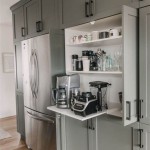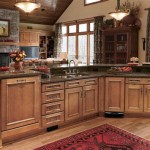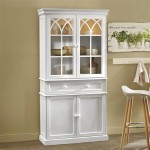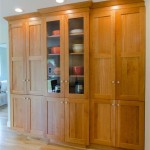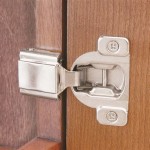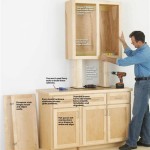Homemade Cabinet Jacks: A Guide to Building Your Own
Cabinet jacks, also known as furniture dollies or lifting jacks, are indispensable tools for moving heavy furniture and appliances. They provide a safe and efficient way to elevate and maneuver large, bulky items without causing damage or strain. While pre-made cabinet jacks are readily available in the market, building your own can be a rewarding and cost-effective endeavor. This article provides a comprehensive guide to constructing homemade cabinet jacks, covering essential materials, construction techniques, and safety considerations.
Materials and Tools
Before embarking on the construction process, gather the necessary materials and tools: *
Wood:
Durable hardwood, such as oak, maple, or cherry, is ideal for the base and the lifting arm. Softwoods like pine can also be used, but they may require additional reinforcement. *Metal rod:
A threaded rod, preferably stainless steel, will serve as the lifting mechanism. Choose a rod length that accommodates the desired lift height. *Nuts and washers:
Secure the metal rod with appropriate nuts and washers. *Metal plate:
A sturdy metal plate, such as steel or aluminum, will form the lifting platform. *Screws:
Wood screws are needed to assemble the base and attach the lifting arm. *Wood glue:
Apply wood glue for a strong bond between the wooden components. *Paint or stain (optional):
Protect and enhance the appearance of the cabinet jack with paint or stain. *Saw:
A handsaw, circular saw, or table saw can be used to cut the wood. *Drill:
A drill with appropriate bits is essential for drilling pilot holes and attaching screws. *Wrench:
A wrench is required for tightening the nuts on the metal rod. *Measuring tape:
Accurate measurements are crucial for proper construction. *Safety glasses:
Protect your eyes from flying debris.Construction Steps
Follow these steps to build your own cabinet jack:
1. Cut the Wood:
* Cut the wood into the desired dimensions for the base and the lifting arm. The base should be wide and sturdy to provide a stable platform. The length of the lifting arm dictates the maximum lift height. *Shape the Lifting Arm:
If desired, you can shape the lifting arm into a curve to create a more ergonomic design and prevent furniture from sliding off during lifting.2. Assemble the Base:
* Join the wooden pieces of the base using wood glue and screws. Ensure the base is square and level. *Reinforce the Base:
For added strength, consider adding a diagonal brace across the base.3. Create the Lifting Platform:
* Drill a hole in the center of the metal plate, slightly larger than the diameter of the metal rod. *Attach the Platform:
Attach the metal plate to the top of the base using screws or bolts.4. Attach the Lifting Rod:
* Drill a hole through the base and the lifting arm, aligning the hole with the one in the metal plate. *Insert the Rod:
Insert the threaded rod through the holes with the head of the rod on the bottom of the base. *Secure the Rod:
Thread a nut onto the rod below the base and another nut above the metal plate. These nuts will allow you to adjust the lift height.5. Attach the Lifting Arm:
* Attach the lifting arm to the base using screws or bolts, ensuring it is securely fastened. *Create a Handle:
Consider adding a handle to the lifting arm to provide a comfortable grip during operation.6. Finish:
* Sand the cabinet jack smoothly to eliminate any rough edges. *Apply Paint or Stain:
Apply paint or stain to protect the wood and enhance the appearance of the cabinet jack.Safety Considerations
Safety is paramount when working with tools and heavy objects. Always prioritize safety by adhering to these guidelines: *
Wear Safety Glasses:
Protect your eyes from flying debris during the construction process. *Use Proper Tools:
Use the correct tools for each step and ensure they are in good working order. *Lift Safely:
Use proper lifting techniques to avoid strain or injury. *Inspect Regularly:
Before each use, inspect the cabinet jack for any signs of wear or damage and make repairs as necessary. *Avoid Overloading:
Do not exceed the weight capacity of the cabinet jack.
Super Wicked Awesome Cabinet Jacks Thisiscarpentry

Making Your Own Cabinet Jack

Super Wicked Awesome Cabinet Jacks Thisiscarpentry

Super Wicked Awesome Cabinet Jacks Thisiscarpentry

Super Wicked Awesome Cabinet Jacks Thisiscarpentry

Super Wicked Awesome Cabinet Jacks Thisiscarpentry
Made Cabinet Jack Lumberjocks Woodworking Forum

Upper Kitchen Cabinet Jack Instructables

Super Wicked Awesome Cabinet Jacks Thisiscarpentry

Super Wicked Awesome Cabinet Jacks Thisiscarpentry
Related Posts

